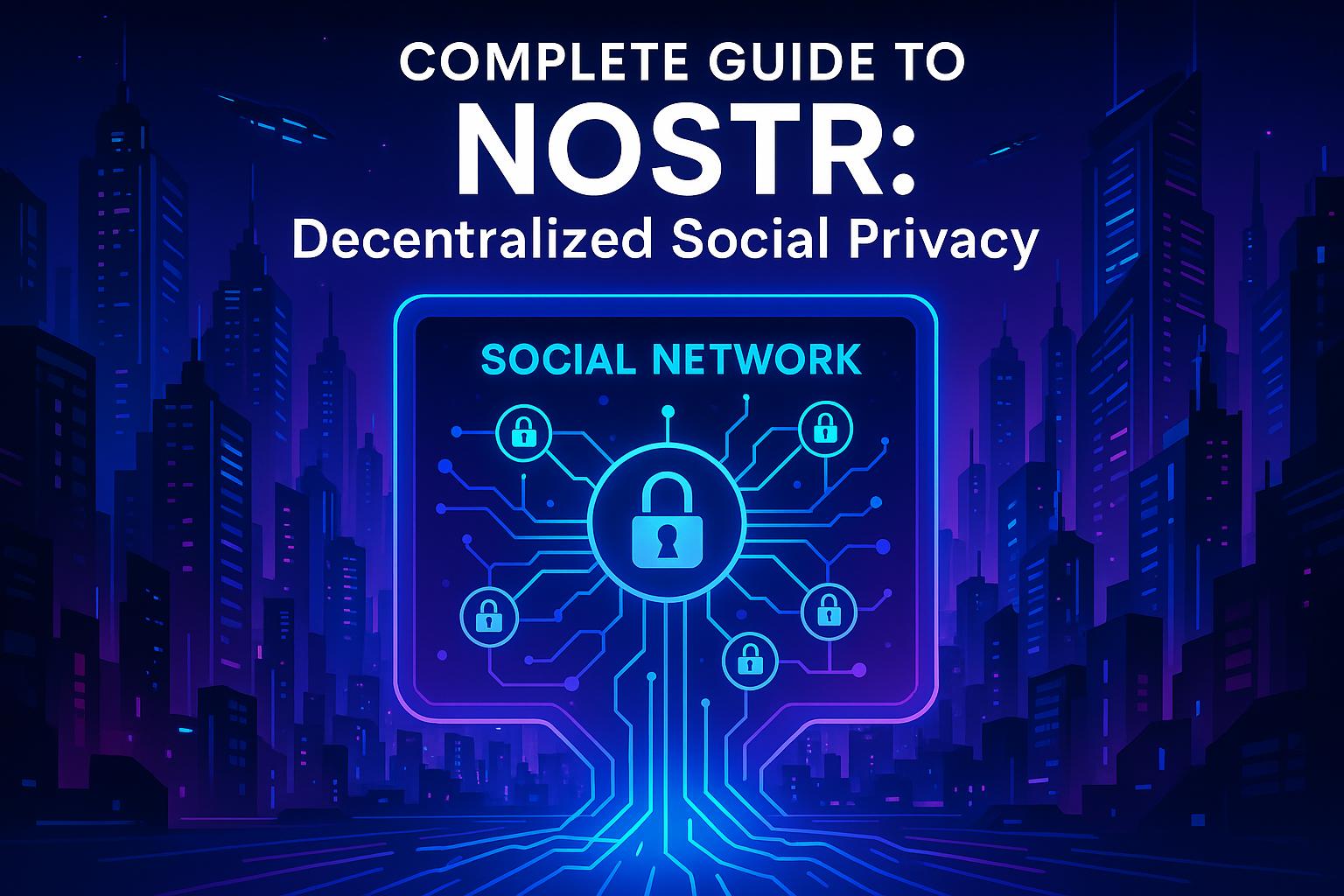May 1, 2025
Social media algorithms control what you see online. They decide which posts appear in your feed, influence conversations, and sometimes limit content visibility. Here's a quick look at how they work and the problems they create:
What They Do: Algorithms sort and rank content based on your behavior, engagement, and preferences.
Impact: They amplify some voices, create echo chambers, and suppress certain topics.
Challenges: Lack of transparency, echo chambers, and hidden content reduction (like shadowbanning).
Solutions: Transparency in how algorithms work, user education, and decentralized tools like MASQ for uncensored access.
Key takeaway: Algorithms shape online speech, but reforms like transparency and privacy tools can help create fairer, more open platforms.
How algorithms shape what you see on social media
How Social Media Algorithms Work
Social media platforms use complex algorithms to decide what content users see. These systems analyze detailed user data to rank posts and determine their visibility.
Main Factors in Content Ranking
Several metrics influence how content is ranked and distributed:
Ranking Factor | Description | Impact on Visibility |
|---|---|---|
Engagement Rate | Measures likes, comments, shares, and other interactions | Higher engagement increases reach |
Time Spent | Tracks how long users view or interact with content | Content that holds attention is prioritized |
User Relevance | Matches content to a user's interests and preferences | Relevant content is shown more often |
Posting Time | Considers when the post is published relative to peak activity | Well-timed posts gain an early edge |
Account Authority | Evaluates past performance and reliability of the account | Consistent engagement boosts visibility |
These metrics combine into a score that determines where a post appears in users' feeds. Engagement, in particular, heavily influences how far content spreads.
How Engagement Affects Visibility
When a post is published, it first reaches a small group of users. If this initial audience interacts with it - through likes, shares, or comments - the post’s reach expands. On the other hand, if early engagement is weak, its visibility shrinks. This quick evaluation process often favors content that sparks immediate reactions, which can be a challenge for posts requiring more thoughtful interaction, like in-depth discussions or breaking news updates.
Problems with Algorithm-Based Content Control
Algorithm-driven content management on social media platforms has introduced challenges that significantly influence how information circulates and how users engage online.
Creation of Echo Chambers
Social media algorithms often lead to the formation of echo chambers by prioritizing content that aligns with a user's existing beliefs and behaviors. This filtering process limits exposure to diverse ideas, creating a cycle where users mainly encounter content that reinforces their current views.
When algorithms detect interest in specific topics, they push similar content, further narrowing the user's perspective. Over time, this feedback loop isolates users, reducing their exposure to differing opinions and potentially amplifying extreme viewpoints.
Echo Chamber Effect | Impact on User Experience |
|---|---|
Content Filtering | Users are primarily shown content they agree with |
Perspective Limitation | Exposure to opposing views is minimized |
Belief Reinforcement | Existing opinions grow stronger |
Discussion Isolation | Interaction with differing perspectives decreases |
This phenomenon not only limits meaningful discourse but also fosters polarization within online communities.
Hidden Content Reduction
Some platforms engage in undisclosed content suppression, often referred to as "shadowbanning" or "quiet demotion." This practice reduces the visibility of posts or accounts without informing the user. It affects both controversial topics and legitimate discussions, preventing important conversations from gaining traction.
The lack of transparency around these actions further complicates the issue, leaving users frustrated and distrustful of the platforms.
Lack of Algorithm Transparency
The secrecy surrounding algorithms undermines trust between users and platforms. Creators and users often face unexplained changes in content reach, which raises concerns about the platforms' intentions. With unclear guidelines, users are left guessing about the rules governing content distribution.
In response to these challenges, some users are turning to decentralized tools like MASQ. These tools bypass traditional filters, offering access to uncensored information and greater control over online interactions.
Ways to Improve Content Distribution
Improving content distribution means addressing challenges from multiple angles. Here's how platforms and users can work together to create a more balanced system.
Making Algorithms Easier to Understand
Platforms need to be more transparent about how their algorithms work. By sharing their ranking criteria, users can better understand what influences content visibility.
Transparency Element | How It Helps Users |
|---|---|
Ranking Factors | Explains what boosts content visibility |
Distribution Metrics | Tracks how far content reaches |
Algorithm Updates | Helps users adjust to changes quickly |
Content Guidelines | Guides creators to align with rankings |
Helping Users Learn About Algorithms
Educating users about how algorithms shape content distribution is crucial. Platforms can provide update notifications, clear ranking explanations, and tools to help users optimize their content.
With this knowledge, users can make smarter decisions and adapt to the algorithm-driven environment. While transparency and education are key, decentralized tools add another layer of fairness by ensuring no content is unjustly hidden.
Leveraging Decentralized Privacy Tools
Decentralized tools, such as MASQ's privacy browser, provide direct access to uncensored content while protecting user privacy. Some standout features include:
Built-in ad and tracker blocking for a smoother browsing experience
Multi-hop routing through more than three global locations
Web3 wallet integration for decentralized online interactions
Access to uncensored content worldwide
Conclusion: Next Steps for Algorithm Reform
Main Points Review
Social media algorithms play a major role in shaping online conversations. They contribute to echo chambers and restrict the visibility of certain content. While there has been some progress in improving transparency, there’s still a long way to go to create a fairer system.
Here are some key areas that need attention:
Reform Area | Current Status | Needed Changes |
|---|---|---|
Algorithm Transparency | Limited visibility | Clear disclosure of ranking factors |
User Education | Basic documentation | Detailed learning resources |
Content Distribution | Centralized control | Shift toward decentralized alternatives |
Privacy Protection | Minimal safeguards | Stronger privacy tools for users |
These changes would require platforms to be more open, educate users effectively, and prioritize tools that protect privacy while supporting free speech.
Privacy Tools for Free Speech
Decentralized privacy tools offer a practical way to address these challenges. One example is MASQ's privacy browser, which gives users greater control over their online privacy and access to unrestricted content.
"Connect to the MASQ dVPN and access the uncensored, global internet privately." - MASQ
For meaningful reform, platforms and users alike must embrace tools that enhance transparency and privacy. Decentralized solutions like MASQ can help break away from the limitations of centralized content control.
FAQs
How do social media algorithms influence the creation of echo chambers?
Social media algorithms are designed to prioritize content that aligns with a user’s past behavior, such as their likes, shares, and searches. While this can create a personalized experience, it often leads to the formation of echo chambers - environments where users are primarily exposed to viewpoints that reinforce their existing beliefs.
This happens because algorithms tend to favor content that generates engagement, which often includes polarizing or emotionally charged material. Over time, this selective exposure can limit diverse perspectives, making it harder for users to encounter opposing ideas or balanced discussions. Addressing this issue requires both platform accountability and user awareness to promote fairer and more inclusive content distribution.
How does shadowbanning impact public conversations on social media?
Shadowbanning can significantly affect public discourse by limiting the visibility of certain users' content without their knowledge. This practice can stifle diverse opinions, creating echo chambers where only certain viewpoints dominate. Over time, it may erode trust in social media platforms and discourage open, transparent conversations.
For a fairer and more inclusive online environment, it's essential to promote transparency in how algorithms determine content visibility. Understanding these mechanisms can help users advocate for more equitable digital spaces that support free expression while addressing harmful content responsibly.
How do decentralized privacy tools like MASQ protect user privacy and enable access to uncensored content?
Decentralized privacy tools like MASQ protect user privacy by routing your internet connection through multiple encrypted hops worldwide. This process makes it extremely difficult for anyone to track your online activity or determine your location.
In addition to safeguarding your privacy, MASQ blocks ads and trackers by default, ensuring a cleaner and more secure browsing experience. It also empowers users to bypass geo-restrictions and censorship, granting private access to a truly open and global internet.





